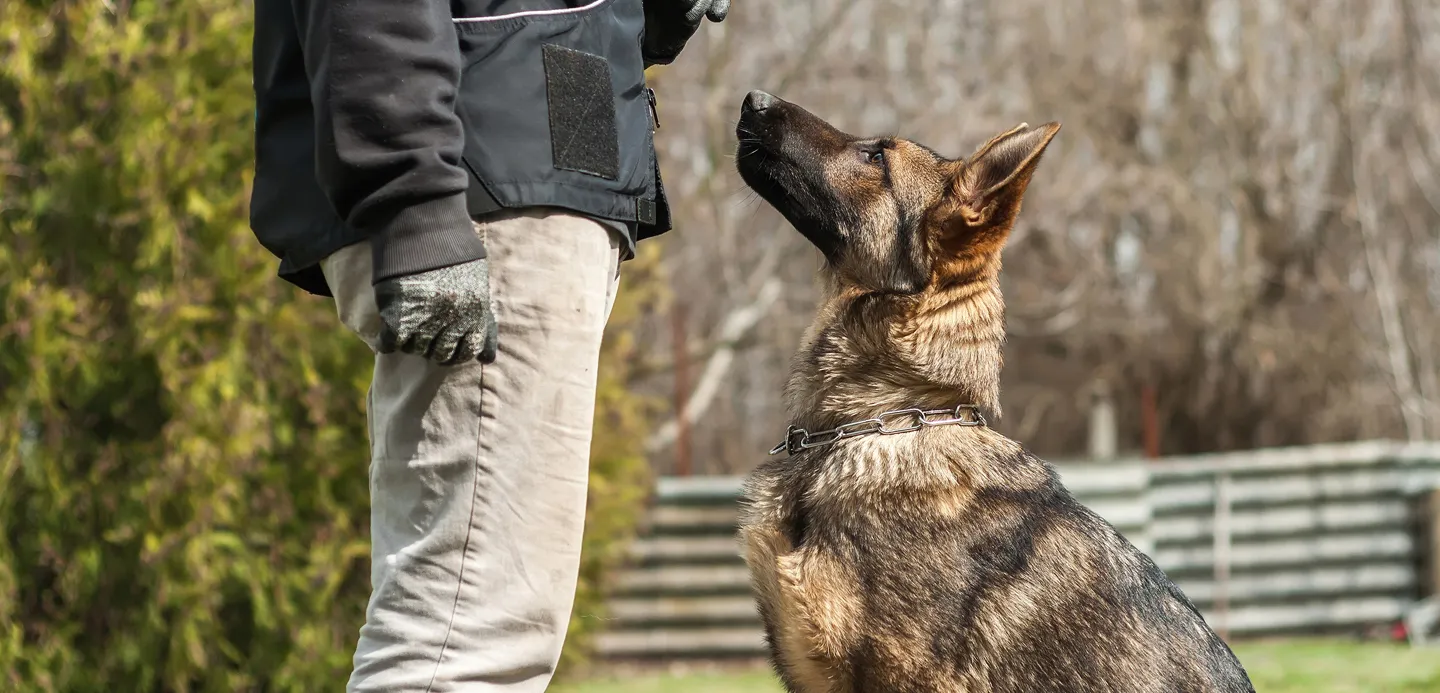One of the most common challenges dog owners face is getting their furry companions to consistently follow commands. With over 35 years of experience in training a diverse range of dogs, I’ve found that there are primarily four reasons why dogs may not listen: fear, confusion, distraction, and choice. A thorough understanding of these underlying factors is the first step towards transforming your relationship with your dog and effectively learning How To Train Your Dog To Listen. By addressing these root causes with patience and consistent methods, you can foster a more obedient and harmonious bond with your pet.
Understanding Why Your Dog Isn’t Listening
Before you can teach your dog to listen, it’s essential to understand why they might be tuning you out. It’s rarely about defiance and often stems from deeper issues.
1. Overcoming Fear
Fear is a powerful emotion that can override any command. If your dog is scared, their instinct is to flee or freeze, not to obey. For example, if a loud car spooks your dog during a walk, their immediate reaction will be to pull away or run, disregarding your calls. In such situations, reprimanding them is counterproductive. Instead, your role is to provide reassurance and create a safe environment. Guide them gently through their fear, helping them realize that with you by their side, passing cars are not a threat. Similarly, a dog hesitant to walk over a storm drain isn’t being stubborn; they are genuinely afraid. Recognise these moments as opportunities for patient reassurance rather than forceful correction. Remember, consistency in your supportive behavior helps them overcome these anxieties over time.
2. Dispelling Confusion
Confusion is a significant barrier to obedience, and often, the source lies with the owner, not the dog. Inconsistent commands or varying tones can leave your dog unsure of what you expect. For instance, if one family member says “SIT,” another says “SIT DOWN,” and a third says “SIT HERE,” your dog will struggle to associate a single action with a specific verbal cue. It’s crucial that everyone in the household uses the exact same command for each action (e.g., always “SIT” and never “SIT DOWN”). Over time, dogs learn to recognize not just the word, but also your tone and body language. They thrive on repetition and consistency. Sending mixed messages will only hinder their progress in understanding how to train your dog to listen. Once your dog has mastered basic commands, you can even test their adaptability with fun exercises, like adding extra words to a familiar command to see if they still respond correctly – a testament to their intelligence and your consistent training.
3. Managing Distractions
The world is full of fascinating sights, sounds, and smells for a dog, making distractions a common reason for a lack of responsiveness. Birds, squirrels, other dogs, or even interesting scents can easily divert your dog’s attention. To effectively teach your dog to listen, you must first secure their focus. A simple yet highly effective method, especially for puppies, is to use their name immediately before giving any command. This simple act acts as an attention reset, signaling that something is about to happen and preparing them to respond. They learn that hearing their name precedes an action or a reward. Positive reinforcement, whether a cheerful tone of voice, verbal praise, or a delicious doggy treat, is essential here. Discovering what truly motivates your pet will transform dog training into a much more enjoyable and successful process. If you’re considering more specialized training, knowing how to train your dog as a service dog or even how to train a puppy to be a therapy dog often starts with mastering attention in distracting environments.
4. The Power of Choice
Finally, and perhaps most importantly, your dog may not be listening because you’ve inadvertently given them the choice not to. This behavior requires consistent correction. Remember the core principle: “Your dog must follow what you ask when asked.” Allowing your dog to frequently disregard commands will lead to a long and arduous battle for control. To successfully demonstrate how to train your dog to listen, it’s vital to establish yourself as the leader. This means:
- Never losing sight of your role as the pack leader.
- Your dog will only listen if you project confidence and control.
- Ensuring your commands are obeyed is fundamental to solidifying your leadership in your dog’s eyes.
Foundational Principles for Obedience
Building on understanding the reasons for a dog’s unresponsiveness, let’s explore the key principles for developing a highly obedient companion.
Establishing Your Role as the Pack Leader
Establishing yourself as the pack leader is paramount. This doesn’t imply dominance through force, but rather through consistent, confident leadership that your dog will naturally trust and follow. Just as an alpha wolf leads its pack not through aggression but through intuition and reliability, your dog will accept you as their leader because they love and trust you. This bond of trust, fostered without physical violence, ensures your dog follows your lead and looks to you for guidance and protection. Consistent behavior from you cultivates consistent obedience from your dog. Your family unit becomes their pack, and understanding their place within it ensures a harmonious existence for everyone.
Mastering Basic and Advanced Commands
 Dog and owner practicing basic obedience commands, highlighting foundational training for how to train your dog to listen.
Dog and owner practicing basic obedience commands, highlighting foundational training for how to train your dog to listen.
Understanding basic commands like “Sit,” “Stay,” “Down,” and “Come” forms the cornerstone of any obedience program. These foundational skills are crucial for managing your dog in various situations. However, advancing to more complex commands can further reinforce your leadership and your dog’s focus. This might include commands like “Heel,” which teaches your dog to walk politely by your side, or “Fetch,” which requires a higher level of understanding and retrieves. Additionally, incorporating hand signals with verbal cues can deepen their comprehension and responsiveness. For more specific guidance, learning how to teach your dog to walk to heel is an excellent next step.
Using High-Value Treats and Positive Reinforcement
High-value treats can be a game-changer in training. These are special rewards your dog doesn’t receive regularly, making them highly motivated to work for them. Positive reinforcement, when paired with the right motivator, significantly smooths the training process. When your dog performs the desired action, immediately reward them. This instant gratification helps them associate the action with a positive outcome. However, the goal is not for your dog to only listen when a treat is visible. Over time, you should aim for your dog to perform commands even with an empty hand, as their desire to please you and the established routine become sufficient motivators.
Setting Boundaries and Expectations
 A confident dog owner demonstrating leadership to their attentive dog, illustrating the concept of being a pack leader for better listening.
A confident dog owner demonstrating leadership to their attentive dog, illustrating the concept of being a pack leader for better listening.
Setting clear boundaries and expectations is another critical aspect of teaching your dog to listen. This involves defining both physical and behavioral limits, such as designated areas where they can or cannot go, or specific behaviors that are unacceptable. This is particularly important in multi-pet households or when hosting guests. Limiting your dog’s freedom, for instance, by using a crate, is a highly effective, non-violent method to correct unwanted behavior. “A crate is not a jail” – it’s a safe, personal space that teaches self-control and reinforces boundaries without harsh punishment. For younger dogs, establishing these rules early on is key, even for basics like getting puppy to poop outside consistently. If your dog exhibits persistent challenging behaviors, exploring canine behavior training near me might be beneficial.
Effective Non-Violent Discipline
When your dog doesn’t listen, correction is necessary, but it must be non-violent. Physical punishment can damage trust and cause fear, hindering your progress.
How to Discipline a Dog That Won’t Listen
 A dog resting calmly inside a modern dog crate, symbolizing non-violent discipline and effective crate training techniques.
A dog resting calmly inside a modern dog crate, symbolizing non-violent discipline and effective crate training techniques.
When I refer to “correction,” I am never advocating for physical punishment. For example, if your dog barks excessively and disregards your verbal commands to stop, simply placing her in her crate can be a highly effective, non-violent correction method. She might continue barking in the crate initially, but allow her to calm down on her own. At this point, no further commands are needed; let the crate serve its purpose as a temporary boundary. Once she settles, you can release her without ceremony. Consistent crate training often leads to rapid learning, reducing the need for frequent use. Dogs inherently prefer to be with their human companions, so temporarily limiting their freedom is a powerful, non-violent form of discipline. This freedom is something they must earn through good behavior.
How Do I Tell My Dog “No” or “Enough”?
The principle of action-reaction is fundamental in dog training. Any action your dog performs that elicits a positive response from you is likely to be repeated. Conversely, actions that lead to a negative consequence, such as the temporary removal of freedom, will eventually be avoided. Learning how to effectively communicate “no” allows your dog to accept your leadership more readily. The word “NO” should be reserved for absolute non-negotiables – actions you never want your dog to perform, such as jumping on furniture or engaging in dangerous behavior. Your dog should understand that “NO” signifies a serious prohibition.
For behaviors that are acceptable in moderation but need to cease at a specific moment, use “Enough.” A perfect example is barking. While you can train your dog not to bark unnecessarily, barking is a natural canine behavior. Therefore, “Enough” teaches your dog to stop barking now, rather than never to bark at all.
You’ll know your dog understands a command when they can execute it three times in a row, consistently. If your dog understands a command, try to avoid repeating it multiple times. Humans often assume their dog didn’t hear them, but if you used their name first, they almost certainly did. Instead of repeating the command, use a neutral sound like “HEY” to signal your growing frustration. Your dog will pick up on your tone and respond more quickly. Remember, immediate positive reinforcement after the command is crucial for reinforcing desired behavior.
Forming a Deeper Bond Through Nonviolent Communication
 A dog owner affectionately petting their dog, representing the strong bond formed through positive and non-violent communication in training.
A dog owner affectionately petting their dog, representing the strong bond formed through positive and non-violent communication in training.
The Wolf Methodology, a cornerstone of my 35-year training program, emphasizes non-violent communication. This approach is not just about teaching commands; it’s about building a profound connection based on mutual respect and understanding. By keenly observing your dog’s cues, understanding their needs, and responding appropriately with gentle but firm guidance, you can forge a deeper, more meaningful bond. This strategy not only leads to better behavior and a dog that consistently listens but also contributes to a happier, less stressed life for your canine companion.
Remember, your dog’s ultimate desire is to please you. By consistently acting as a clear, trusted pack leader and utilizing non-violent, positive reinforcement methods, you will teach them to listen not out of fear, but out of love and respect. It may require more time and effort initially, but the reward is a loyal, well-behaved friend for life. Start today, and witness the transformative power of understanding how to train your dog to listen.
